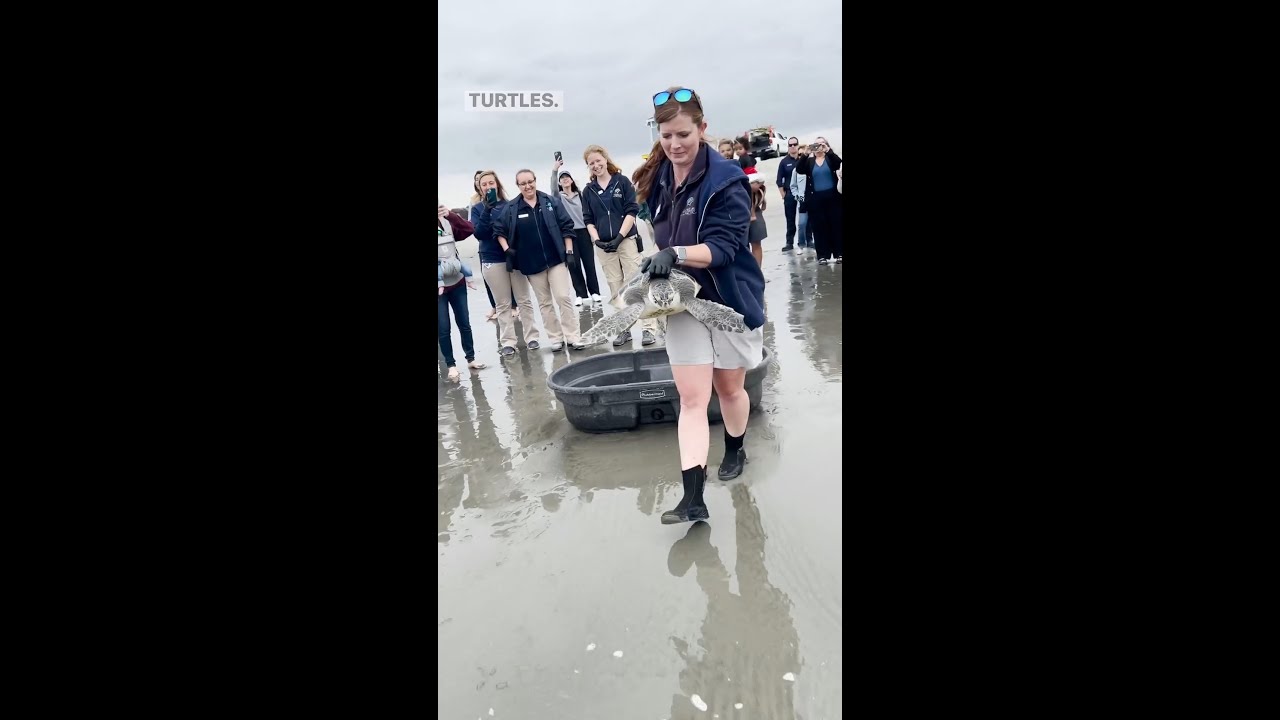– The significance of turtle rehabilitation and release programs
– The role of video documentation in wildlife conservation efforts
– The impact of human activities on marine life and the environment
– The importance of public education in conservation initiatives
Turtle rehabilitation and release programs play a critical role in preserving marine ecosystems. These initiatives are essential for the recovery of turtles injured or otherwise impacted by human activities or environmental hazards. The rehabilitation process involves several stages, starting from the rescue of the distressed animal to its eventual release back into the wild. This journey is a testament to these creatures’ resilience and highlights the dedication of conservationists who work tirelessly to ensure their survival.
Video documentation has become an invaluable tool in wildlife conservation efforts. A rescued turtle released back into its natural habitat is a powerful visual story that can inspire and educate the public about the efforts to protect these vulnerable species. Videos capture the moment of release, showcasing the culmination of hard work by conservation teams and the indomitable spirit of the turtles. This visual medium effectively reaches a broad audience, generating awareness and fostering a connection between viewers and the natural world.
Human activities, including pollution, habitat destruction, and irresponsible tourism, have profoundly impacted marine life and the environment. Turtles, in particular, face numerous threats, from entanglement in fishing gear to ingestion of plastic waste. The release of a rescued turtle highlights the ongoing struggles these animals face and the urgent need for concerted conservation efforts. By addressing the root causes of these challenges, society can work towards creating a safer and more sustainable environment for marine life.
Public education is pivotal in the success of conservation initiatives. It is crucial to inform the community about the importance of marine ecosystems, the threats they face, and the steps individuals can take to mitigate these dangers. The story of a rescued turtle and its journey back to the wild can serve as a compelling tool for education, drawing attention to the broader issues. Engaging the public in dialogue and encouraging participation in conservation activities can lead to more significant support for these causes and a greater impact on environmental preservation efforts.
In summary, turtle rehabilitation and release programs embody the intersection of rigorous science, dedicated conservation work, and public engagement. The role of video documentation in these efforts cannot be overstated, serving as a bridge connecting the public with the realities of wildlife conservation. The adverse effects of human activities on marine life underscore the importance of such initiatives and the need for a collective approach to environmental stewardship. Finally, educating the public about these issues is fundamental to inspiring action and support for conservation efforts, ensuring a safer future for turtles and the ecosystems they inhabit. The shared goal of a healthier planet for all its inhabitants can be achieved through understanding, commitment, and the right actions.
*****
Source Description
This morning we released a rescued green sea turtle!
The sea turtle was rescued near Avila Beach, California, on December 11, 2023, by The Marine Mammal Center’s San Luis Obispo Operations based in Morro Bay, California. The Marine Mammal Center in Morro Bay transferred the rescued sea turtle to the Aquarium with authorization from the National Oceanic and Atmospheric Administration’s (NOAA) Fisheries office for a medical evaluation, surgery, and care because of the Aquarium’s expertise in treating and releasing stranded and injured sea turtles.
When the sea turtle arrived at the Aquarium on December 11, 2023, it had an injured flipper and was in need of medical care and rehabilitation. The Aquarium’s veterinary and animal husbandry staff performed surgery on the sea turtle’s injured front flipper and had been caring for the sea turtle behind the scenes as it recovered. The animal is a subadult and is estimated to be between three and five years old.
“It was an incredible moment, watching the turtle make its way from the sand into the ocean and swim away. We are grateful to have had the opportunity to help it recover and return to the wild,” said Dr. Adams, Aquarium of the Pacific veterinarian.
The turtle is fitted with a microchip ID and also a microsatellite tag that was provided and applied by Upwell Turtles. If all goes according to plan, we should receive location updates in about 3 weeks. Stay tuned!
Read more: https://www.aquariumofpacific.org/news/story/aquarium_of_the_pacific_veterinary_team_releases_endangered_sea_turtle_to_the_wild_after_its_rescue_and_recovery_from_surgery


